60 Foods That Start With B (A Comprehensive List)
HurryTheFoodUp is reader-powered. If you click through using links on our site we may earn a small commission at no cost to you.
Welcome to (probably) the only list of foods that start with B you’ll ever need. From fruits and vegetables to snacks and dishes beginning with B, we’ve got you covered.

Foods beginning with B are certainly an interesting bunch. While researching this comprehensive list I discovered so many fascinating foods and cuisines that I had never even heard of before.
Learning about a food’s origin, its history and how it is eaten around the world is a really eye-opening experience.
Use this list to broaden your knowledge of foods starting with B, and let me know in the comments which ones are top of your list to try.
Personally, I’m on the hunt for some babaco – I can’t wait to tell my friends I’ve eaten a pentagonal fruit!
The foods on this list are split into sections: whole foods (like fruits and vegetables), dishes, processed foods and snacks.
I haven’t included brands on this list of foods that start with B, although there are many that could be included here.
I also made lists of vegetables that start with B and fruits that start with B if you’re looking for even more food items that start with B!
60 Foods That Start with B
How many do you think you know already?
Whole foods that start with B
Bamboo Shoots
Bamboo shoots, also known as bamboo shoots, are the edible shoots of the bamboo plant. If you can’t find them where you usually shop, try a nearby Asian supermarket since they’re a staple of Asian cuisine from Nepal to Taiwan!
Banana Squash
Another vegetable beginning with B (unless you’re using its species name which is Cucurbita maxima), but is less common that the butternut squash, is the banana squash!
It’s similar to it’s butternut cousin in taste (sweet, nutty) and in that it’s a winter squash (hard skin, harvested in full maturity).

Bean Sprouts
Bean sprouts come from, you guessed it, sprouted beans!
They are extremely popular in South and Southeast Asia, and while they don’t have incredible nutritional value, as vegetables go, they have a subtle flavour and a great, crunchy texture.
Beetroot/ Beets
Known as beetroot in the UK and beets in America, it is the taproot section of the beet plant (whose leaves are also edible and known as beet greens).
Beetroots can be eaten raw, boiled or roasted and taste earthy and slightly bitter. Its species is Beta vulgaris.
Belgian Endive
Belgian endives are a small head of lettuce.
Although, this description does them rather a disservice, so, more accurately: belgian endives are a small but expensive vegetable that has a slightly bitter taste and are grown slightly below the soil in dark rooms to preserve their pale yellow colour and delicate flavour.
Its species name is Cichorium intybus var. Foliosum.

Bell Peppers
Bell peppers are a crunchy, sweet and vitamin C-filled addition to many cuisines. They are commonly found in red, yellow, orange and green colours but also come in purple, chocolate and striped varieties.
They are technically a fruit of the species Capsicum annuum but are usually used in savoury dishes.
Bitter Melon
Bitter melon (aka Momordica charantia) is a type of tropical vine that belongs to the gourd family. It’s closely related to courgette/ zucchini and pumpkin. It is cultivated around the world but is a staple in many Asian countries.

Black Beans
Black beans, also known as black turtle beans or Phaseolus vulgaris, are particularly popular in Latin American cuisines.
Native to the Americas, black beans are popular in vegetarian cooking thanks to their hearty, almost meaty texture and high protein and fibre content.
If you fancy incorporating them into your cooking, why not try these Venezuelan black bean arepas con queso?
Black Eyed Peas
Not to be confused with the popular band of the same name, these legumes are an excellent source of fibre and so are great for supporting digestion. Their species name is Vigna unguiculata.
Black-eyed peas originated in West Africa, and have been grown in Virginia since the 17th century, when enslaved people brought plants from their homeland with them.
Today, they’re a staple of soul food and other cuisines from the southern states of the US.

Black Radish
Although relatively uncommon now, black radishes were the most popular variety of radishes in Europe in the Middle Ages.
It’s not enough to make me want to time travel, but I do wish black radishes were more easily available today! Its species is R. raphanistrum.
Black Salsify
Black salsify is already easily the best named B vegetable on this list, but if you’re feeling adventurous you could also call it serpent’s root or viper’s grass. These names derive from the widespread belief that it’s a good antidote to snake bites.
Personally, I’d rather just get medical attention ASAP but I guess it could be worth a shot if you’re out of other options. Its scientific name is Scorzonera hispanica.
Bok Choy
Bok choy (Brassica rapa subsp. chinensis) is a type of Chinese cabbage that is traditionally used in stir fries and soups in a similar way to cabbage and other leafy greens. It can also be eaten raw, and in Britain, it’s also known as pak choi.
The green leaves of bok choi have a stronger taste than the white centre, but the taste is nonetheless mild and slightly sweet with a slight peppery undertone.

Boniato
Boniato is similar to a sweet potato but not quite so sweet. It has dry, white flesh and pink skin. Its scientific name is Ipomoea batatas. Use it by substituting it for sweet potato in these tacos!
Broad Beans
These are also known as fava beans, or vici faba if you’re feeling official, and are a flowering plant in the pea and bean family Fabaceae.
Broad beans are also grown as a cover crop as they help to prevent soil erosion and extracting excess nitrogen from the soil. I never knew a simple bean could be healthy for us and so good for the environment too!

Broadleaf Arrowhead
This is a plant found in wetlands, also known as Indian potato, which produces edible tubers that have long been a staple of Native American cooking. Its scientific name is Sagittaria latifolia.
Broccoflower
Also known as Romanesco broccoli, and winning the award for the most beautiful vegetable probably ever, the broccoflower is the edible portion (the immature flower head) of the species Brassica oleracea.
It was first documented in Italy in the 16th century, and the number of spirals on the head of the broccoflower is always a Fibonacci number.
The broccoflower tastes rather like normal broccoli but the striking patterns on the flower head may mean you never want to cut it up to eat it!
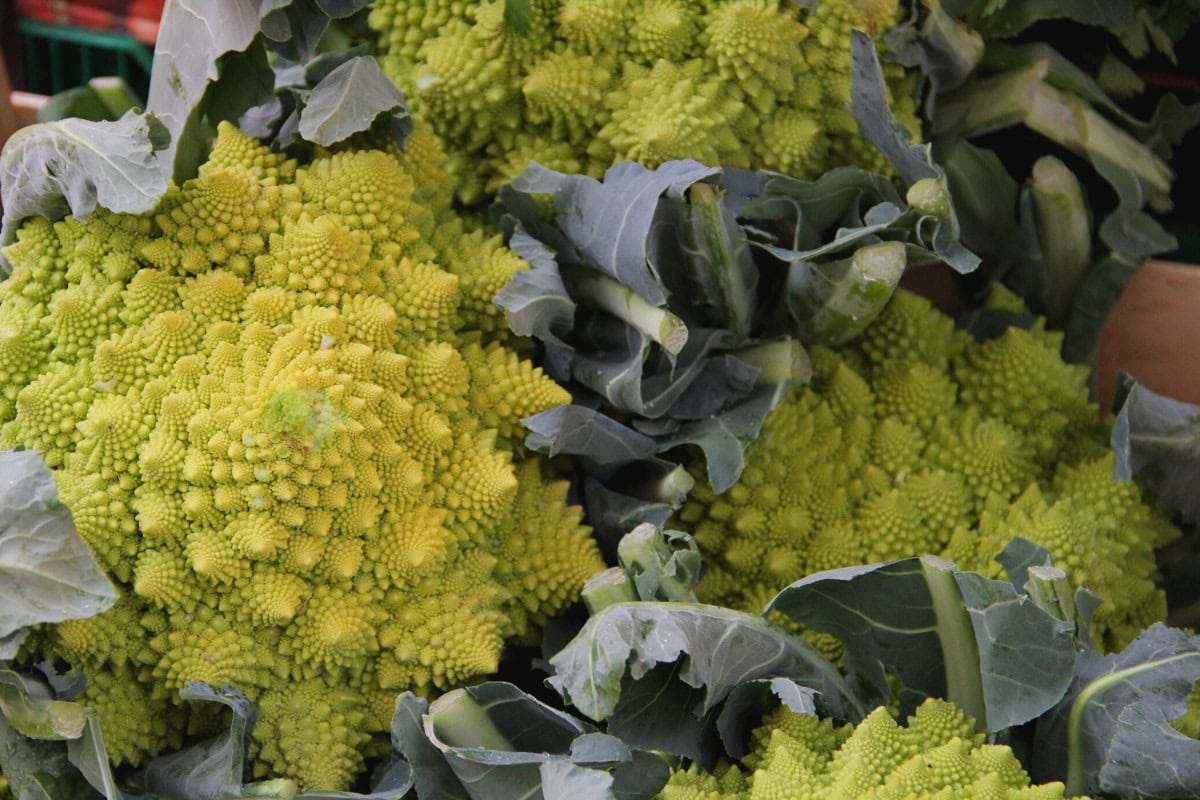
Broccoli
This delicious vegetable (Brassica oleracea var. italica) is another member of the cabbage family, just like brussels sprouts.
The word broccoli comes from the Italian plural of broccolo, the diminutive form of brocco, meaning ‘sprout’ or ‘small nail’, which, when you think about a broccoli floret creatively, kinda makes sense.
Add garlic roasted broccoli as a side to your next meal!
Broccoli Rabe
Also known as rapini, broccoli rabe is among the best cruciferous vegetables for vitamin C and A content and the health benefits they herald. This leafy green vegetable is particularly associated with Mediterranean, especially Southern Italian cooking. Its species name is Brassica ruvo.
Broccolini
Broccolini is not just regular broccoli’s baby sibling, but a hybrid between broccoli and gai lan (a.k.a Chinese broccoli or Chinese kale).
Its creation took over 8 years of development and it was first grown commercially in 1994. Its species name is Brassica oleracea var. botrytis.

Brooklime
Brooklime is a perennial sprawling herb that grows at the shore of rivers and in wet meadows and marshlands. Brooklime, along with watercress and oranges, was once eaten to help prevent scurvy.
Now, it is used largely as a decorative floral herb in salads. Veronica beccabunga is its scientific name.
Brussels Sprouts
They get an unfairly bad rap but it’s estimated that British supermarkets sell around 750 million brussel sprouts every Christmas time!
Brussels sprouts are actually the edible bulbs of a larger cabbage plant (the Gemmifera cultivar group of cabbages).
They’re surprisingly great in salads and derive their name from Brussels, in Belgium, where they have long been one of the most popular foods.
Burdock Root
The burdock plant has long, dark roots, though is often eaten in other forms like burdock tea or burdock oil. If eating burdock root whole, you must first peel it and then boil, sautee or fry it.
This root vegetable has long been used in traditional medicine and there is evidence to support its antioxidant and anti-inflammatory effects. In case you were wondering, its scientific name is Arctium lappa.

Butter Lettuce
Sweeter than regular lettuce, butter lettuce is a great source of vitamin A, vitamin C, vitamin K, calcium, and iron. It comes in both green and red leaf varieties and would work perfectly in these Korean inspired lettuce wraps.
Its species name is Lactuca sativa.
Buttercup Squash
Like butternut squash, this is a winter squash (Cucurbita maxima) that has a nutty flavour.
Buttercup squash is round and dark green and contains lots of beta-carotene and alpha-carotene for vitamin A, as well as vitamin C, which helps with immunity.

Butternut Squash
This is a winter squash (or, by its species name, Cucurbita moschata), meaning it is harder skinned compared to summer squashes like courgettes/ zucchinis. Butternut Squash has a sweet and nutty taste, a hard rind and an orange flesh.
Although squash was first domesticated almost 10,000 years ago, butternut squash was created rather later, in 1944, by crossing the pumpkin and gooseneck squash varieties.
Babaco
Related to the papaya and said to taste something between a strawberry, papaya, kiwi and pineapple, the babaco’s scientific name is Carica pentagona. It is native to Ecuador and grows in a pentagonal shape, hence its scientific name!

Bael
Also known as a Bengal quince, the bael fruit is considered sacred to Hindus and grows in India, Bangladesh, Sri Lanka, and Nepal. Its scientific name is Aegle marmelos.
Balloon Berry
This sweet fruit originally came from Japan and looks like both a strawberry and a raspberry, which has, imaginatively, landed it the alternative name strawberry raspberry.
It’s very popular in Lithuania and its scientific name is Rubus illecebrosus.
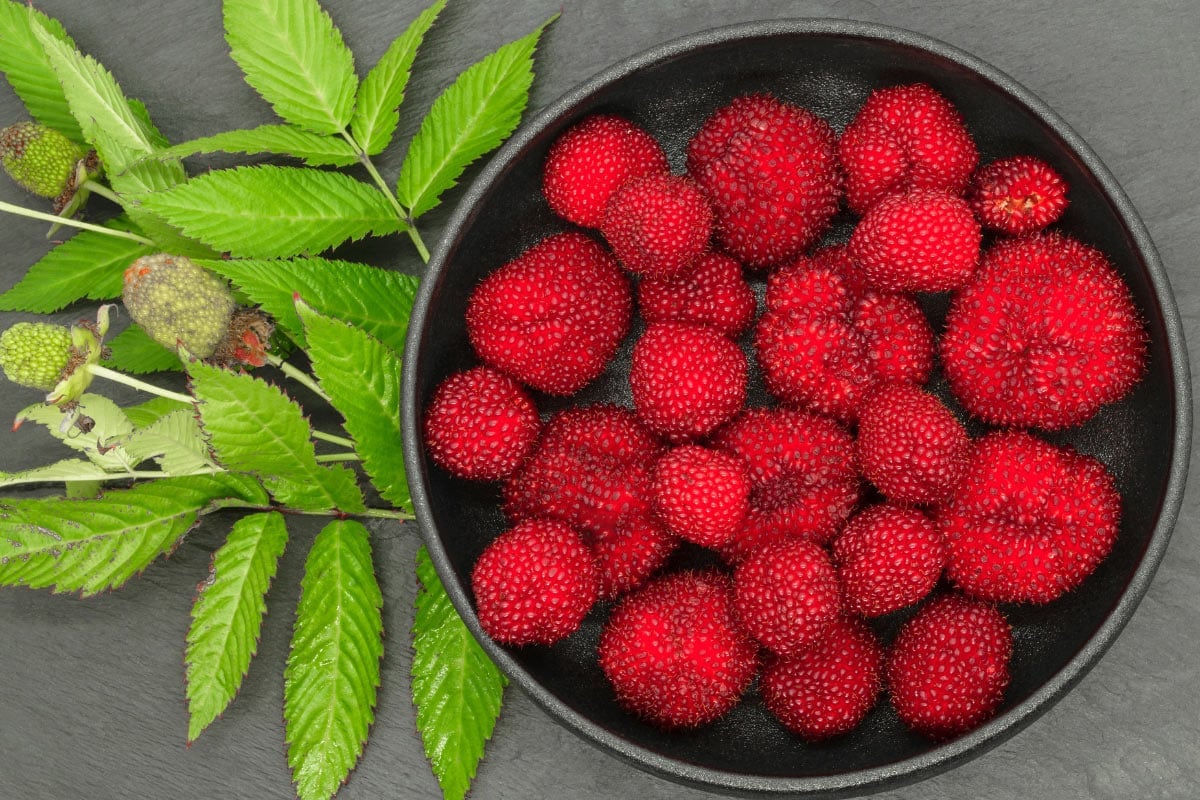
Banana
Bananas are botanically a berry, and come in many varieties. The most common bananas are sweet bananas and plantains which are often used for cooking in savoury dishes.
The genus of bananas is Musa and is a staple food used in different ways around the world.
Banana Melon
The banana melon is an heirloom melon that originates in the United States, way back in the 1880s. It is elongated and has a yellow rind (hence the banana in its name), has pink flesh and a very sweet taste.
Its scientific name is Cucumis melo cultiv. ‘Banana’.
Banana Yucca
The banana yucca is native to the deserts of the southwestern United States and northern Mexico. The young flower stalks of the plant can be eaten raw or cooked as can the banana-shaped fruits. Its binominal name is Yucca baccata.
Barberry
The thorny shrubs of the barberry bush make the sharp, acidic berries very difficult to harvest. Berberis vulgaris is its scientific name.

Beach Plum
The beach plum is a hardy and resilient plant that grows wild on the East Coast of the USA.
It was used extensively by Native American peoples as food and medicine and is currently experiencing a revival in interest thanks to a focus in many communities on foraging and locally sourced food. Its scientific name is Prunus maritima.
Beach Sugar Apple
This fruit is incredibly rare and is native to Brazil where it is not cultivated and only grows in the wild. It has orange skin and a sweet and tasty white pulp and is known, scientifically, as A. salzmannii.
Betel Nut
You’d never normally hear me urging you not to eat fruit, but the betel nut (actually a berry) is one that you certainly want to avoid!
Also known as the areca nut, this berry is chewed for its mildly stimulant effect in many southern and eastern Asian countries but has been proven to have carcinogenic effects on the body.

Bengal Currant
This is a berry-sized fruit that is commonly used as a condiment in Indian pickles and spices. It is rich in iron, vitamin C and vitamin A, and its binominal name is Carissa carandas.
Bergamot Orange
This is a fragrant citrus fruit the size of an orange that is a probably hybrid of lemon and bitter orange and has a sour taste.
Aromatic extracts are often used as a popular ingredient in other products and is well-known for its use in flavouring Early Grey teas and Turkish delight. Its scientific name is Citrus bergamia.
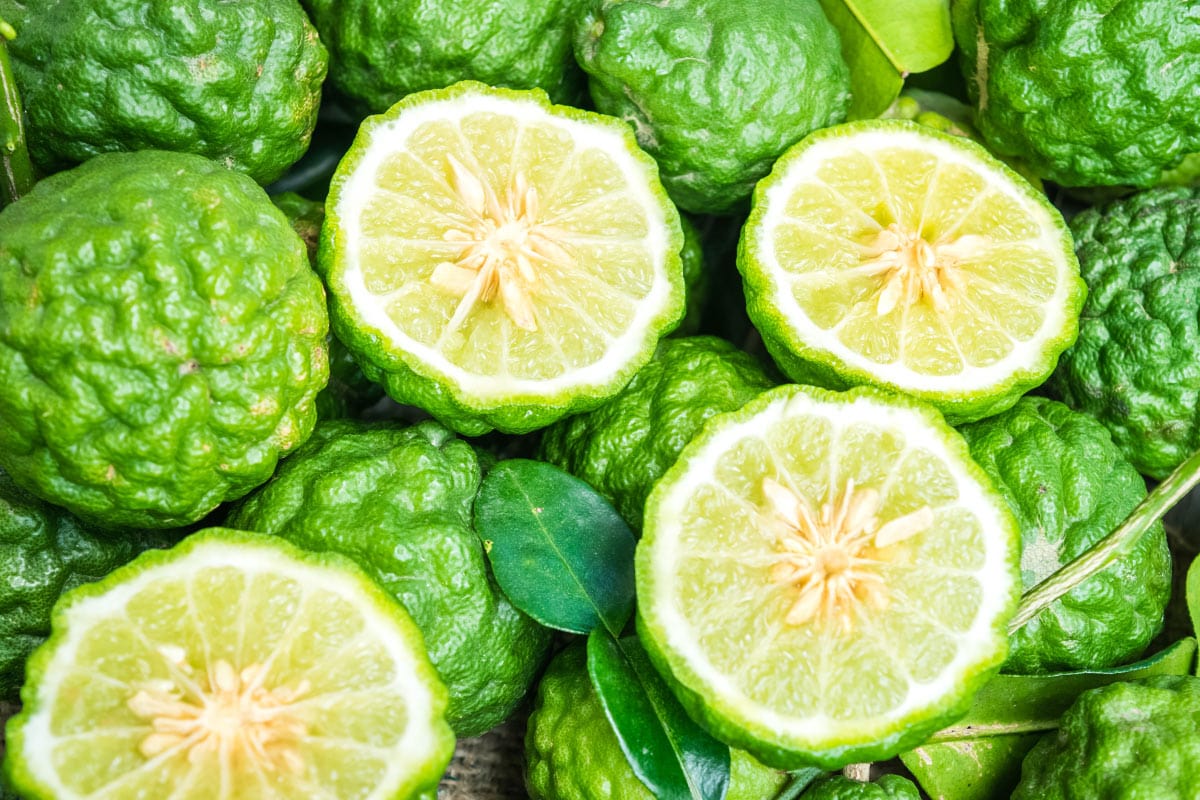
Bilberry
Also known as a wimberry and a whortleberry, this fruit grows throughout the northern hemisphere and is often used for pies, tarts and muffins. It stains the hands and tongue blue while eating, and has often been used as a dye for food and clothes in Britain.
Its scientific name is Vaccinium myrtillus.
Black Cherry
Black cherries are an important food in pre-Columbian Mexico, this fruit can be eaten raw or cooked and used in various forms such as jelly or rum. Its scientific name is Prunus serotina.
Black Currant
Black currants can be eaten raw but are usually cooked and used in pies, jams and syrups. Cultivation of the blackcurrant is believed to have begun in the 17th century in Europe, and the fruit’s scientific name is Ribes nigrum.

Black Mulberry
Black mulberries have been cultivated for so long that their exact origin is unknown. This delicious fruit is cultivated for its rich taste, and deep purple colour, which is almost black when ripe. Its scientific name is Morus nigra.
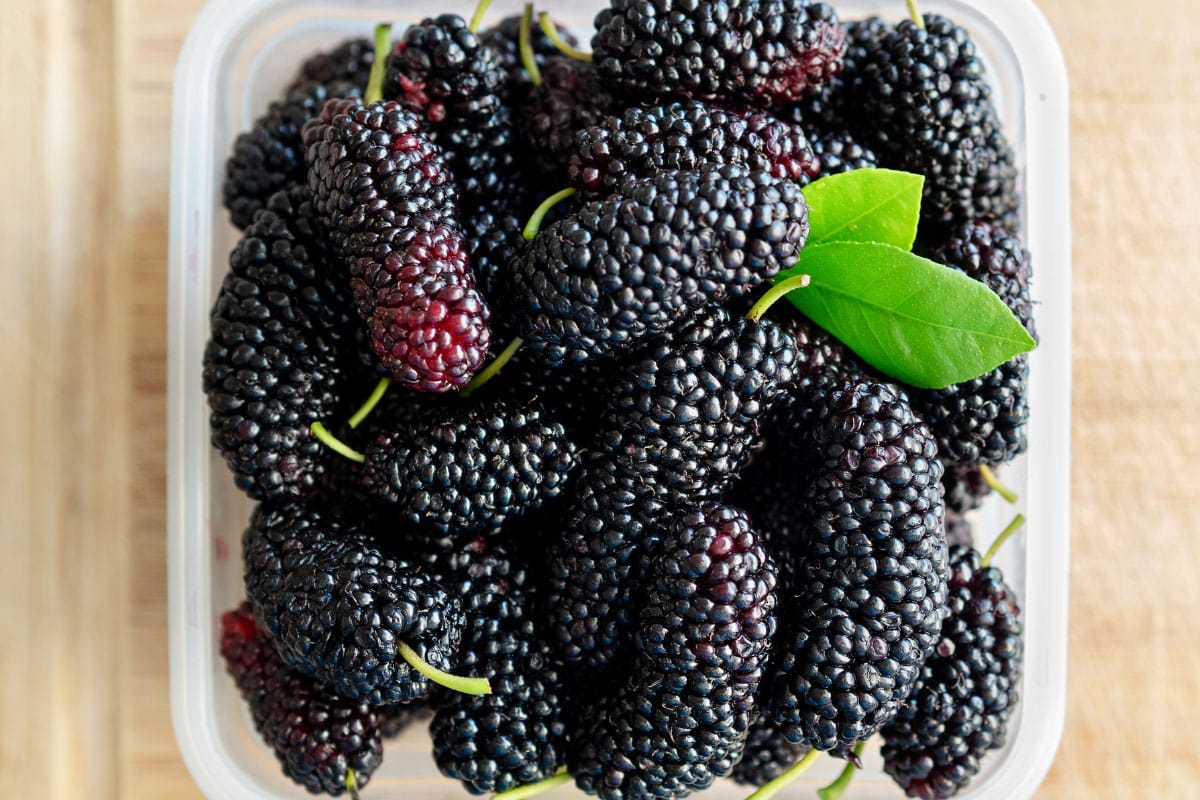
Blood Orange
Blood oranges have a very unique flavor compared with other citrus fruits, thanks to their raspberry hint of flavour.
The blood orange gets its name from the dark red colour of its flesh and is a natural mutation of the orange, one of the most popular fruits today, which was itself a hybrid between the pomelo and the tangerine. Its species is Citrus × sinensis.
Australian scientists recently created a blood lime which has grown well in poor soil, but is not currently commercially available.
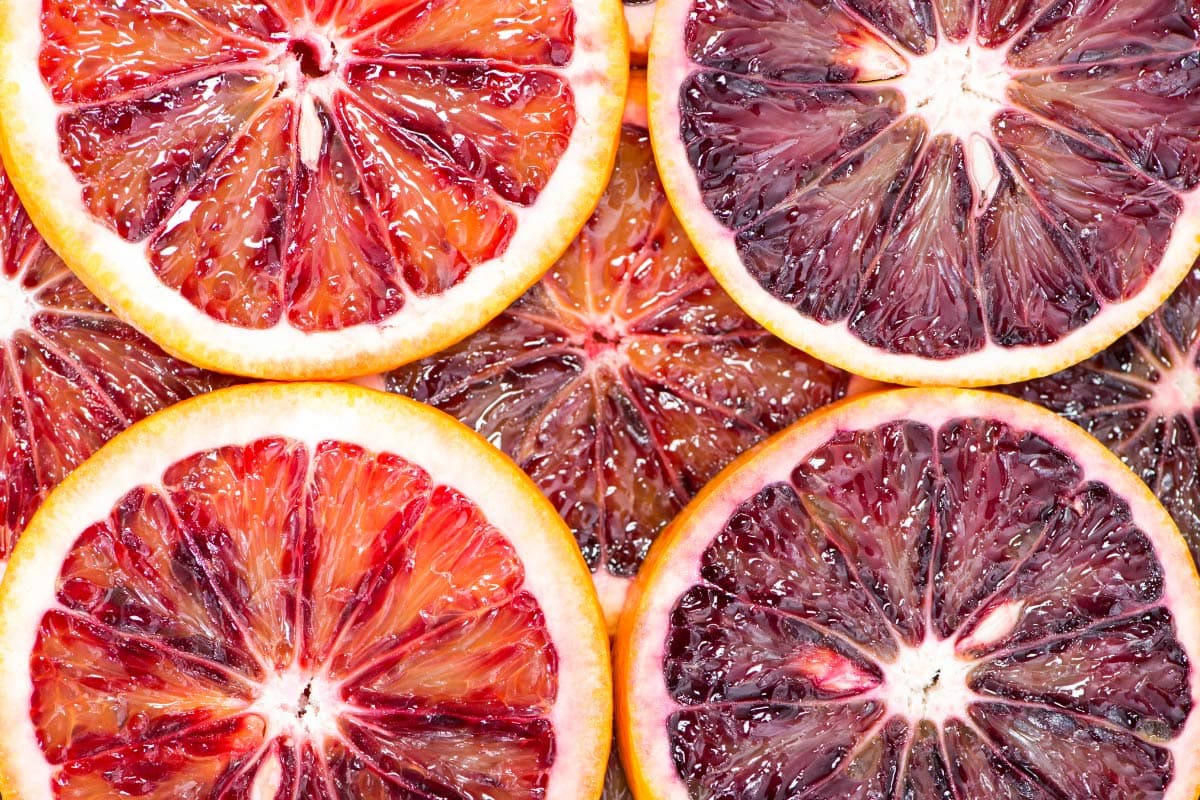
Blueberry
Blueberries are a family of flowering plants with edible fruit in the form of blue or purple berries, which are native to north America.
There are many different species of blueberries around the world but the USA is the biggest producer of cultivated blueberries. Cultivated varieties were first introduced to Britain in the 1930s.
Blueberries are of the genus Vaccinium section Cyanococcus.
Blue Passionflower
This species of flowering plant produces beautiful blue flowers and small, rather flavourless fruit. The fruit is, however, known for its medicinal uses and is added to syrups, ice cream and herbal tea in South America.
The flower is the national flower of Paraguy and the plant’s scientific name is Passiflora caerulea.

Bolivian Mountain Coconut
This fruit only grows in Bolivia, so you’ll have to go a bit further than the grocery store if you want to get a taste! The tree is endangered due to habitat loss, but produces small, sweet flavor coconuts.
Parajubaea torallyi is this tropical fruit’s binominal name.
Brazilian Guava
This fruit is native to the Americas and grows from as far north as Mexico, to central America, to as far south as Argentina (despite its slightly misleading name).
The bush grows a small fruit, described as having strawberry-like, tart flavor and a sometimes bitter taste. Its species name is Psidium guineense.
Breadfruit
Breadfruit gets its name because the flesh of the fruit, when cooked, is said to resemble the texture of potatoes or freshly baked bread.
It is a domesticated descendant of the breadnut and is used as a staple in various ways in many cuisines around the world today thanks to its filling, hearty texture.

Buddha’s Hand
Winning the award for most unusually shaped fruit beginning with B, the Buddha’s hand is a citrus fruit with a thick rind that originates from northeastern India or China.
The different varieties of this yellow fruit have different shapes, from closed fingered to open fingered, depending on the cultivar. Its scientific name is Citrus medica var. sarcodactylis.

Burdekin Plum
This plum is edible but tart, although the paler the green of its skin, the sweeter the flesh is said to be.
It is native to Australia and the Pacific Islands, and native Australians often bury the fruit underground to quicken the ripening process. Its binominal name is Pleiogynium timoriense.
Bush Butter Fruit
Also known as safou or butterfruit, this fruit gets its name from the fact its consistency is like butter when cooked, and is often eaten spread onto bread.
The fruit has many health benefits and is rich in vitamins though has a much higher fat content than many other fruits. Its scientific name is Dacryodes edulis, where edulis simply means edible!
Dishes that start with B
Beef Wellington
Beef wellington is an English dish made of roast beef coated in pâté and rolled in pastry. Similar types of protein wrapped in pastry dishes exist such as salmon or sausage Wellington, as do vegetarian options like vegetable Wellington.
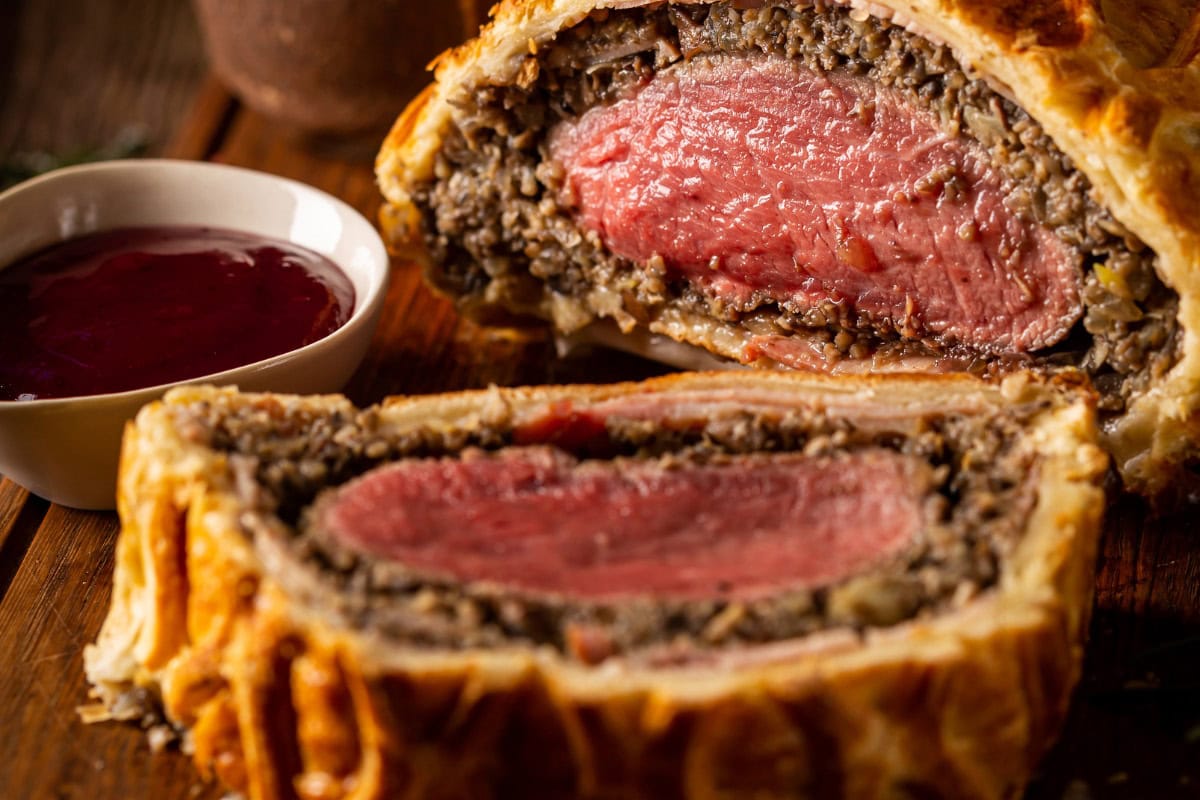
Burger
The loosest definition of a burger is contents (usually a patty) in a bun, which is really not dissimilar to a sandwich.
However, most people think of beef burgers or their veggie and vegan equivalents (bean burger or fake meat burger) as the main ingredient when they think of this classic dish.
Burrito
The burrito is a Mexican and American-Mexican-derived cuisine that is made from a flour tortilla wrapped in a cylindrical shape around various fillings such as rice, beans and vegetables.
They are usually eaten using the hands and are popular all around the world.

Broccoli Salad
Broccoli salads are a twist on the usual leafy based salads and can be enjoyed hot or cold. Broccoli is usually boiled or roasted before serving but can also be eaten raw.
Processed foods that start with B
Baba Ghanoush
This is a Levantine appetiser that is made with chopped roasted aubergine, olive oil, lemon juice and tahini. It has a smoky taste and can be served as a side dish to a main meal or as a starter with pita bread.

Balsamic Vinegar
Balsamic vinegar originates from Modena, Italy and is made from grape must, which is freshly crushed grape juice, including skins.
It has a dark colour and intense flavour and falls under a protected origin of designation, meaning it can only be produced in the provinces of Modena and Reggio Emillio in Italy.
Blue Cheese
Possibly the smelliest of letter b foods around, but nonetheless delicious, blue cheese has been around since at least 400 BC.
Its distinctive sharp flavour is created through edible mould cultures that give it its famous blue colour.
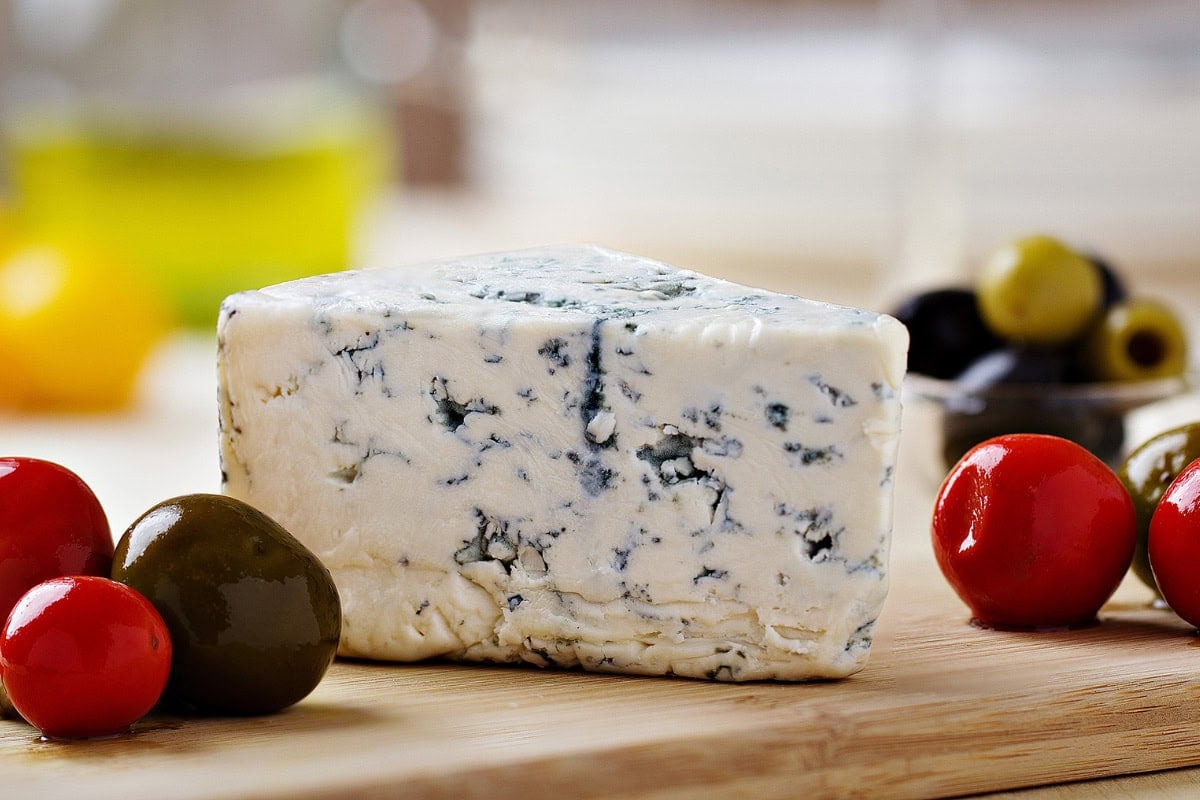
Brown Sugar
Sugar is produced from sugar canes, and brown sugar gets its colour from some of the molasses that are left in the sugar during the refining process, unlike white sugar which is completely refined.
Snacks that start with B
Banana Bread
Banana bread is a type of cake that is baked in a loaf tin (hence the bread in the name). This cake is a great way to use up ripe bananas that are otherwise too overripe to eat.
Baklava
This delicious layered dessert can be eaten after a meal or as a snack. It is made of layers of flaky filo pastry with chopped nuts and honey or syrup inside and is especially popular in Turkish and Arab cuisines.

Okay, so there you have it, 60 foods that start with B! I’m interested to hear which ones are new to you, what you learnt about their history or which one you want to try first in the comments below.
60 Foods That Start With B (A Comprehensive List)
Need to brush up your knowledge to win that pub quiz? Check out this comprehensive list of foods that start with B!
Whole Foods
- Bamboo Shoots
- Banana Squash
- Bean Sprouts
- Beetroot/ Beets
- Belgian Endive
- Bell Peppers
- Bitter Melon
- Black Beans
- Black Eyed Peas
- Black Radish
- Black Salsify
- Bok Choy
- Boniato
- Broad Beans
- Broadleaf Arrowhead
- Broccoflower
- Broccoli
- Broccoli Rabe
- Broccolini
- Brooklime
- Brussels Sprouts
- Burdock Root
- Butter Lettuce
- Buttercup Squash
- Butternut Squash
- Babaco
- Bael
- Balloon Berry
- Banana
- Banana Melon
- Banana Yucca
- Barberry
- Beach Plum
- Beach Sugar Apple
- Betel Nut
- Bengal Currant
- Bergamot Orange
- Bilberry
- Black Cherry
- Black Currant
- Black Mulberry
- Blood Orange
- Blueberry
- Blue Passionflower
- Bolivian Mountain Coconut
- Brazilian Guava
- Breadfruit
- Buddha’s Hand
- Burdekin Plum
- Bush Butter Fruit
Dishes
- Beef Wellington
- Burger
- Burrito
- Broccoli Salad

